The Body Language of Cats

If you’re a cat lover, you’ve probably noticed that these animals have a very particular body language. In fact, cats can communicate with their owners and other animals using a variety of postures, movements, and sounds. Understanding the body language of cats can help you better understand your pet and strengthen your relationship with them.
Cats use their body language to express a variety of emotions, such as happiness, fear, aggression, and discomfort. For example, when a cat’s happy, it may purr, wag its tail gently, and rub its head against you.
It’s important to keep in mind that each cat is unique and may have its own set of body signals. However, by learning some common patterns, you can begin to better understand what your cat is trying to communicate. In this article, we’ll explore some of the most common cat body behaviors and what they may mean. Are you ready?
Elements in the body language of cats
Part of taking good care of your feline is knowing how to recognize it needs and moods. And there’s no better way to do that than by learning how it expresses itself. In the following sections, you’ll dive into the world of feline body language, exploring each component separately in detail.
Gestures with the head and facial expressions
The position of the cat’s head sends information in line with the rest of the body. Let’s see the most common ones:
- Head down: This is usually a sign of submission due to fear. If this is accompanied by other signals, such as an arched back and bristling hair, it’s a sign of anger.
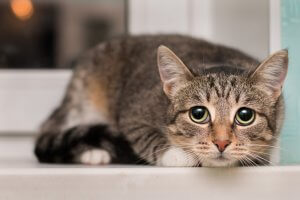
- Head raised and facing forward: This posture indicates well-being and confidence.
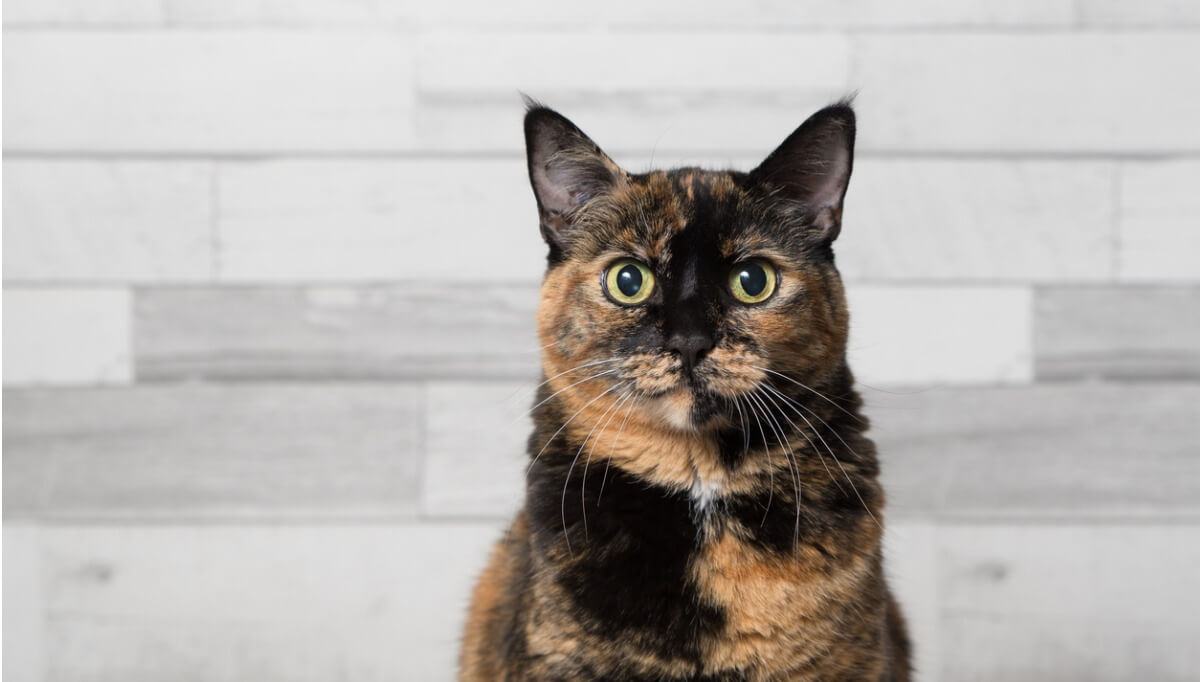
Emotions expressed by cats through facial gestures
At the same time, a cat’s facial expression is also easy to interpret. To understand it, you need to look at the combination of the animal’s eyes, nose, and ears, which gives rise to several expressions:
- Tranquility: Although usually confused with intentions to dominate the world, a cat with narrowed eyes, relaxed ears, and facial muscles is calm and at ease in its environment.
- Anger: On the other hand, cats have a very explicit way of indicating that they’re angry and might attack. This expression includes ears close to the head, dilated pupils, and bared fangs (and probably snorting).
- Interest: Eyes wide open, pupils dilated, ears raised and pointing towards what interests them.
- Fear: Eyes wide open, ears down, and a withdrawn body position. Depending on the animal’s reactivity, there will be gestures of submission or aggressiveness.
Tail movements
The tail of cats, although it seems to move randomly, is one of the most expressive elements of their body. Let’s see some positions and movements:
- Tail down and close to the body: Anger, fear, or a sign of discomfort due to a health problem.
- Tail up: If it’s rigid and vibrant, it’s a positive emotion. If it’s arched, it also suggests curiosity, but out of insecurity. And, if you see a cat’s tail bristling, it’s a sign of anger.
- Tail vibration: This usually happens when you pet your cat and it gets excited. You may see the tail stretch upwards and vibrate slightly.
- Swaying tail movements: Indecisiveness, especially when walking.
- Short, quick, dry movements: Indicates that the cat is upset.
Eye Expression
The expression in your cat’s eyes is a key indicator of his emotional state. Dilated pupils often denote excitement, fear, or aggression. In stressful situations, such as during a visit to the veterinarian, dilated pupils may reveal anxiety.
In contrast, narrow pupils often express happiness or relaxation and are common when the cat is enjoying petting or resting comfortably. Observing pupil size gives you valuable information about how your feline is feeling and helps you tailor your interaction to keep them happy and safe.
Cat body postures and characteristic behaviors
There are certain behaviors and postures that are revealing in themselves. Some may seem confusing, but it’s easy to identify them with this guide:
- The cat shows you its belly: This gesture communicates a positive message of well-being and confidence. This is sometimes confused with an invitation to play, but its meaning depends on the context.
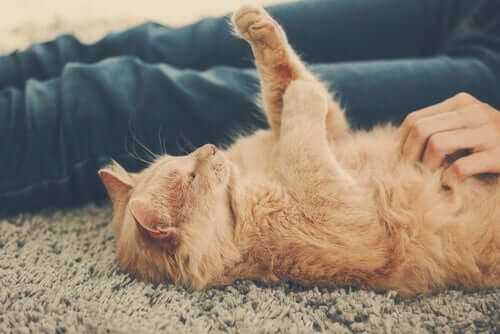
- The cat is crouching and ready to run: That cat is intensely afraid. Beware of its reaction, which may be a flight or an attack.
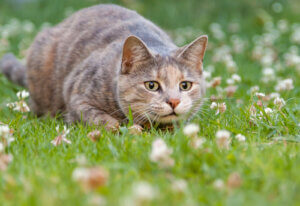
- Sprays urine: This is a way of marking territory. This isn’t normal urine but a variety that smells stronger, and the cat sprays it on walls and other surfaces.
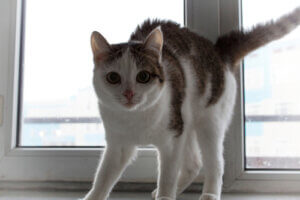
- Urine spray: This is a way of marking territory. This isn’t normal urine but a variety that smells stronger, and the cat sprays it on walls and other surfaces.
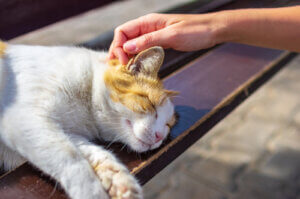
Cat sounds also reveal information
Snorting is a guttural, threatening sound that cats use to express discomfort or fear. It may indicate that the cat feels cornered or aggressive, warning that it prefers not to be disturbed. Recognizing the snort is essential to avoiding stressful situations and allowing the cat to regain its calmness.
On the other hand, purring is a more friendly and relaxed sound. In general, it denotes happiness and comfort. Cats purr when they’re calm and enjoy the interaction. It can be a sign of satisfaction during grooming or while being petted. Interpreting the purr well allows us to understand the cat’s well-being and emotional connection to its environment and caregivers.
The importance of knowing your individual pet
As already mentioned, knowing a cat’s body language is important for getting to know cats, but it is not enough. First of all, you need to be able to integrate all the animal’s gestures and attitudes to obtain reliable information. This happens naturally when you live with them.
However, don’t forget that your feline is an individual animal with its own personality and style of relating to others. Therefore, take the time to get to know your life partner, as the most important thing is to build a peaceful coexistence that brings happiness to both parties.
All cited sources were thoroughly reviewed by our team to ensure their quality, reliability, currency, and validity. The bibliography of this article was considered reliable and of academic or scientific accuracy.
- de Lima, C., Grala, C., Boff, G., Rondelli, M., & de Oliveira, M. (2020). The importance of the facial and body expressions interpretation of domestic feline in clinical practice. Research, Society and Development, 9(11). https://rsdjournal.org/index.php/rsd/article/view/9875
-
Best Friends Animal Society. (s.f). Cat Body Language: Communication and Expression. Best Friends Animal Society. Consultado el 9 de Agosto de 2023 https://resources.bestfriends.org/article/cat-body-language-communication-and-expression
